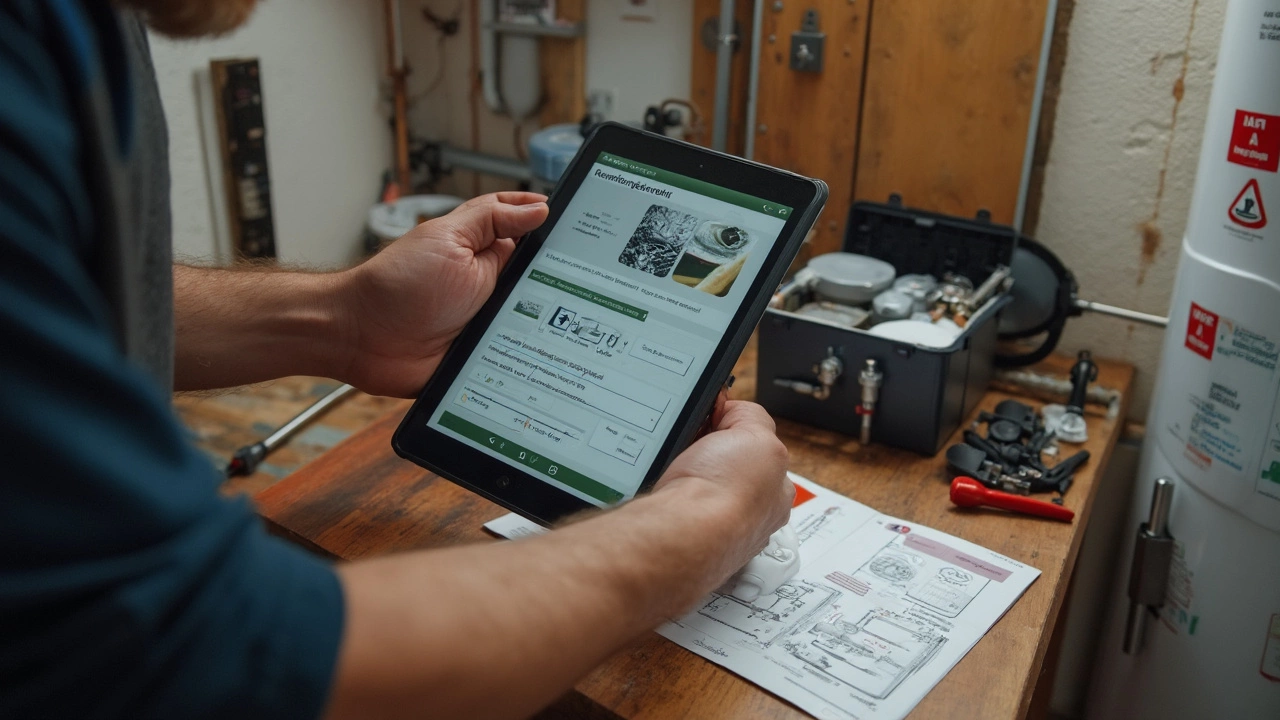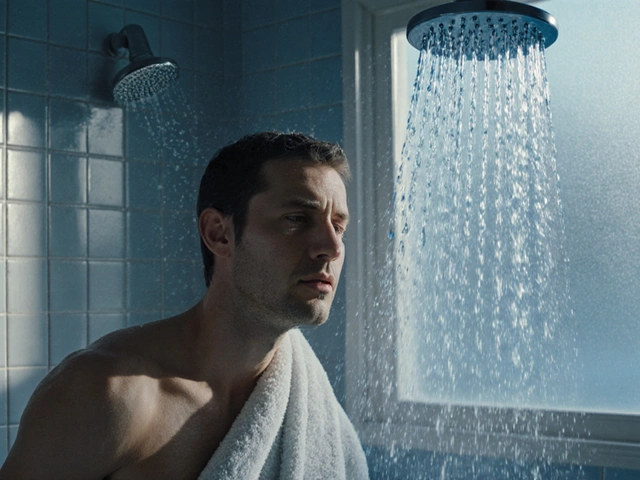No hot water can make your whole day miserable, right? The first thing people want to know is how fast they can get that hot shower back. Here’s the deal: the time it takes to fix a hot water heater really depends on what’s gone wrong and the type of water heater you’ve got.
Is your heater not putting out any warmth at all, or is it just running out quicker than usual? Before you panic, check if the pilot light is out or if your breaker has flipped. Sometimes, the “repair” is as easy as flipping a switch or pressing a reset button. I’ve seen folks call a plumber only to have them push a button in under five minutes—easy money for them, but pretty frustrating for the homeowner.
- Different Types of Water Heater Issues
- DIY Fixes vs. Calling a Pro
- How Long Repairs Usually Take
- Tips to Speed Up the Process
Different Types of Water Heater Issues
Hot water heaters have a few common problems that pop up all the time, and each one means a different repair speed. If the water is just cold, the issue is usually with the power source: a tripped breaker, a blown fuse, or a pilot light that’s decided to take a vacation. These fixes can literally take minutes if you know what to check first.
Then there’s the classic “water smells funky” or “water is rusty.” This normally means sediment has built up in the tank, or the anode rod is cooked. Flushing out the tank and swapping the rod can take around an hour if you’ve done it before, maybe longer if you’re new to plumbing tools. Did you know annual flushing extends the life of your tank by years? The Department of Energy recommends a full flush every 12 months, which can prevent most weird smells and noises.
If you’ve got water where it shouldn’t be—like around the base of your heater—that’s a sign of a leak. Small leaks might come from loose pipe connections, which a wrench can fix quickly. But a big puddle probably means the tank is cracked. That’s pretty much a replace-not-repair situation, and it’ll take half a day or more, depending on your setup and local plumber schedules.
Other problems sneak up quietly. Maybe your water heater’s making strange rumbling noises or your showers aren’t lasting as long. Many times, this means mineral buildup in the tank is making it work harder and less efficiently. According to Consumer Reports,
"Sediment buildup is one of the leading causes of water heater failure, but flushing the tank regularly can double its life span."
- Cold water only? Check pilot light or breaker first.
- Weak or smelly water? Could be tank sediment or bad anode rod.
- Leaks? Tighten fittings if you’re lucky. Puddles mean it’s probably time for a new tank.
- Weird sounds or lukewarm water? That’s usually scale or sediment making trouble inside.
Knowing the actual issue is the first big step. It helps you decide whether this is a quick fix or a job for a pro—and how long you’ll need to budget for the hot water heater repair.
DIY Fixes vs. Calling a Pro
If you're dealing with a water heater issue, the first thing that pops into your mind is probably, "Can I fix this myself or do I need a plumber?" Cutting corners can save you cash, but messing with something beyond your skill set can end up costing more in the long run.
For the easy stuff, you might not even need to lift the phone. The classic examples? The pilot light on a gas heater goes out, or the breaker trips on an electric one. Here’s how you can tackle some of these without calling anyone:
- Hot water heater repair step #1: Check the power. On electric units, verify the breaker hasn't flipped. Flip it off and on if needed. On gas heaters, make sure the gas valve is open and the pilot is lit (there's usually a sight glass so you’ll see the flame).
- Reset the heater. Most electric models have a little red reset button under a panel. Just press it. If it trips again, though, you have a real problem—a failing thermostat or heating element.
- Adjust the thermostat. Maybe someone nudged it down. It should typically be set around 120°F (about 49°C) for comfort and safety.
- Check for leaks around valves and fittings. Tighten with a wrench, but if water is coming from the tank itself, don’t play the hero. That’s a sign the tank’s toast.
Still stuck? Yeah, this is when it’s time to call a pro. Don’t mess with replacing heating elements, gas valves, or pressure relief valves unless you really know what you’re doing. Professional plumbers usually have the tools, replacement parts, and experience to swap out a busted thermostat, replace anode rods, or even drain sediment build-up. Fun fact: The average licensed plumber finishes most basic hot water heater repairs in about 45 minutes to an hour, assuming they have the right part on hand. Complicated issues like leaks in the tank, major electrical problems, or anything involving gas lines are way better (and safer) in expert hands.

How Long Repairs Usually Take
The big question is: how much time are you actually looking at before you have hot water again? The answer really changes depending on what’s broken, whether your heater is gas or electric, and if the part is on hand. Let’s break it down with some real numbers.
- Electric water heaters: Replacing a heating element or thermostat usually takes 1–2 hours if you know what you’re doing. Some pros can wrap it up even faster, maybe under an hour.
- Gas water heaters: Swapping out a broken thermocouple or pilot assembly also runs about 1–2 hours. If you need a gas control valve, add an extra hour because it’s a bit more involved and often needs some testing for safety.
- Leaks or tank replacements: If your tank itself is leaking, you’re not looking at a repair but a full replacement, and that usually runs 2–4 hours for most homeowners with easy access. Apartments or tight spaces can take longer — maybe half a day.
Here’s a quick table showing the average repair times for the most common hot water heater fixes:
| Issue | Repair Time (Approx.) |
|---|---|
| Pilot light or breaker reset | 5–10 minutes |
| Thermostat or heating element (electric) | 1–2 hours |
| Thermocouple (gas) | 1–2 hours |
| Gas control valve | 2–3 hours |
| Tank replacement | 2–4 hours (sometimes longer) |
| Flushing sediment (maintenance) | 30–45 minutes |
If you’re wondering about how fast a plumber can even show up, average wait time for same-day visits is anywhere from 2 to 6 hours, depending on how busy they are. Repairs usually happen in one visit, unless parts need to be ordered, which can add a day or two. Keep in mind that older models or rare brands may turn a quick fix into a longer wait just for the right replacement part.
If you really want your hot water heater repair to go quick, make sure you have the make and model info ready for your pro. That helps them show up with the right gear, saving you time and hassle.
Tips to Speed Up the Process
If you want your hot water back fast, a little prep goes a long way. Most delays aren’t about how hard the fix is—they’re about figuring out what’s wrong or waiting around for the right part. Here’s how to keep things moving.
- Hot water heater repair always goes smoother if you know your water heater basics up front. Jot down the brand, model, and age before you call anyone. If you have the manual, keep it handy. This helps the plumber show up ready instead of guessing when they get to your place.
- Shut off the power or gas before you take a look or let anyone else start. For electric heaters, kill the power at the breaker. For gas models, turn the gas control knob to the “off” position. Safety first—it speeds things up by making sure nobody gets shocked or starts a gas leak.
- If you spot a leak, put a container under it and mop up the water. It’s a little thing, but it makes the plumber’s job quicker and safer when they don’t have to wade through puddles as soon as they walk in.
- Order parts in advance if you know what you need and it’s a common issue, like a bad thermostat or heating element. These are usually easy to find at a hardware store, and showing up with parts in hand skips a lot of waiting and rescheduling.
- Ask for a repair window when you schedule service. Companies often have “emergency” or “fast track” slots for extra money. If it’s urgent, mention it up front to get slotted in sooner.
One last thing—keep your water heater maintained. Draining the tank once a year to flush out sediment and checking the anode rod saves you a lot of repair headaches. The cleaner your tank, the less likely you are to end up stuck with cold showers and long waits for help.




